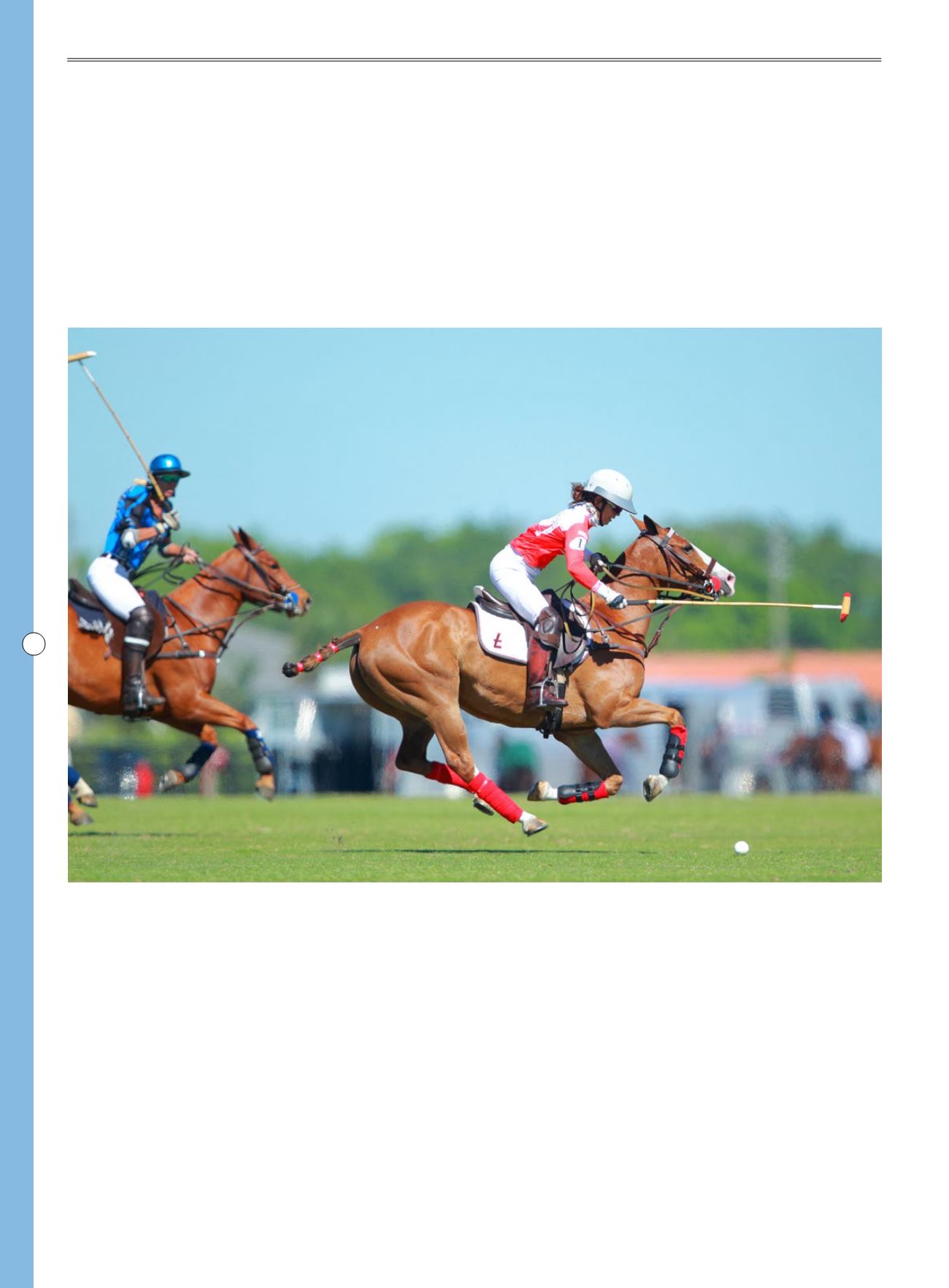
hurlinghampolo.com
TA L K
22
TO N Y R A M I R E Z / I M A G E S O F P O LO
A H E A D O F T H E G A M E
Dawn Jones discusses how the introduction of the women’s specific handicap
a decade ago has contributed to improvements in women’s polo
While playing polo over the course of
the last 2 years, I have seen significant
changes for the better, especially in women’s
polo.The women’s specific handicap is one
of these notable improvements.
It was created in 2009 by Argentina’s
Samantha (Samy) Perrusi, who recognised
the need to build a women’s handicap along
with a conversion scale to the general
handicap so that one woman player could
be differentiated from another more
accurately when competing in women’s polo.
Samy understood the compression issues
female players faced within the general
handicap scale, particularly from -2 to 2,
and she also understood there was a need
to differentiate between female players who
had comparably different skill sets. By 2013,
the USPA board approved and started using
the Women’s Handicap in January 2014.
Since 2014, a higher level of interest
began to emerge as teams were built with
more accurate handicaps for a level playing
field of competition.Thankfully, each country
already implementing the system is taking
measures through their women’s handicap
committees to fine tune each female
registered member’s handicap within the
0-10 handicap scale, with translation charts,
benchmark scales, and a handicap criteria
code for clear and uniform guidelines.
Several noticeable benefits have resulted
from introducing a women’s specific
handicap. More women’s tournaments are
being organised globally, and the more often
women’s-specific tournament opportunities
are provided with a women’s handicap, the
more often a female player will be seen,
evaluated and able to improve her handicap.


